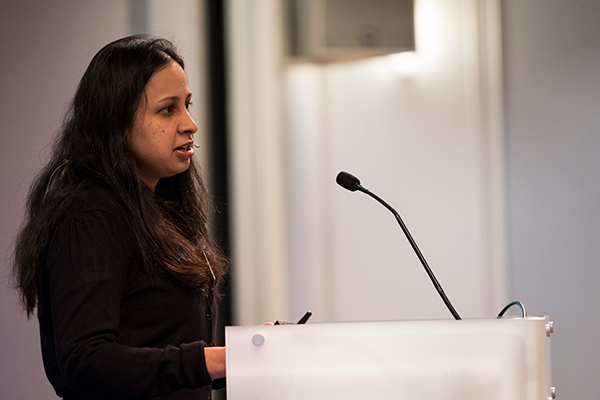Cross-faculty research
Indeed, our recent Case study review of interdisciplinary research in Norway shows that Norwegian universities are establishing cross-faculty research centres and research priority areas to conduct and stimulate IDR. Cases in point are centres like the Arctic Centre for Sustainable Energy, Centre for the Science of Learning & Technology (SLATE) and Centre for Scalable Data Access in the Oil and Gas Industry (SIRIUS) at the Universities of Tromsø, Bergen and Oslorespectively,andthethematicpriorities articulated in the research strategies of these universities.
Both of these approaches – centres and thematic areas – allow interdisciplinary re- search communities to form around specific topics or problems, either by co-locating different disciplines in a single place or by creating a network of researchers from dif- ferent disciplinary backgrounds.
In Norway, these approaches are not mutually exclusive. Researchers based in purpose-built centres often collaborate clo- sely with networks of external researchers based at universities and institutes in Norway and other countries.
Barriers
Nevertheless, researchers reported barriers to interdisciplinary research in our study, based on their own institutional context and experience. The most common were barriers that originate from the discipline-oriented organisation of education and research.
First, undergraduate and postgraduate training is usually disciplinary in nature, so students do not develop interdisciplinary skills.
Second, universities’ discipline-based organisation, which is reflected in the degree courses, administrative and financial systems and research spaces, can create barriers to interdisciplinary research.
For instance, collaborating with other faculties or departments, universities or even non-academic organisations may require non-standard administrative and financial arrangements. Moreover, researchers within one faculty or department are less likely to interact on a day-to-day basis with researchers from other disciplines.
Third, research funding allocation and academic publishing have traditionally also been discipline-based. Even when interdisciplinary research proposals or publications are put forward, these are often reviewed through a combination of disciplinary lenses rather than a single interdis- ciplinary lens as many peer reviewers, having trained and worked in a predominantly disciplinary research milieu, are unsure about reviewing the components of a proposal or publication outside their own domain of expertise.
A means to an end
This does not mean that discipline-based faculties or degree courses should be things of the past. Interdisciplinary research is not an end in itself but a means to an end, in the same way as monodisciplinary research. Our concern should be the quality and impact of the research and not whether it stems from one or more disciplines. Inter- disciplinary research should not be promoted at the expense of good monodisciplinary research and vice versa.
So, how do we ensure an equal playing field for both monodisciplinary and inter-disciplinary research?
Leadership and policies
Institutions and funders can do a great deal. Through their leadership and policies, they can help create a research culture where interdisciplinary research is as much part of normal research activity as monodisci- plinary research.
This can be done in several ways.
One is to make disciplinary boundaries easier to cross, for example by creating platforms for cross-disciplinary conversations such as cross-faculty coffee mornings, sandpits or seminars, creating strategies for managing income across faculties and centres and setting up interdisciplinary research programmes.
For instance, UiT–The Arctic University of Norway has set up a research funding programme that requires collaboration between at least three different faculties to conduct research on areas of strategic priority to the university. In English universities seed funding for new interdisciplinary collaborations or testing out new approaches has proven very successful.
Another way to reduce barriers against interdisciplinary research is to demonstrate that it is valued by institutions and funders. For example, by rewarding interdisci- plinary activity at par with mono-disciplinary research in terms of appointments and promotions, while also recognising that interdisciplinary research can take more time to produce results and that publishing interdisciplinary research in top-rated journals can be difficult.
Clearly articulated commitment followed by targeted support also showcases how an institution values interdisciplinary research. For example, funders can promote good peer review practices and provide reviewer training for interdisciplinary proposals. Besides, key staff acting as ‘champions of interdisciplinary research’ can increase the visibility of interdisciplinary research and help to embed it in insti- tutional structures and culture.
Create a supportive environment
In the end, it is important to remind ourselves that ultimately all institutions and funders can do is facilitate interdisciplinary research by creating a supportive environment. The research itself and the underpinning ideas have to come from the researchers.
The success of interdisciplinary research will depend on the creativity of motivated researchers who are open to and respect other disciplinary perspectives and put in the time and effort to develop an understanding of other disciplines, build interdisciplinary networks and create a shared vision and mutual trust within their research teams.
Hovedbilde: Anoushka Davé from Technopolis at Research Council of Norway conference (Photo Martin Skulstad)


